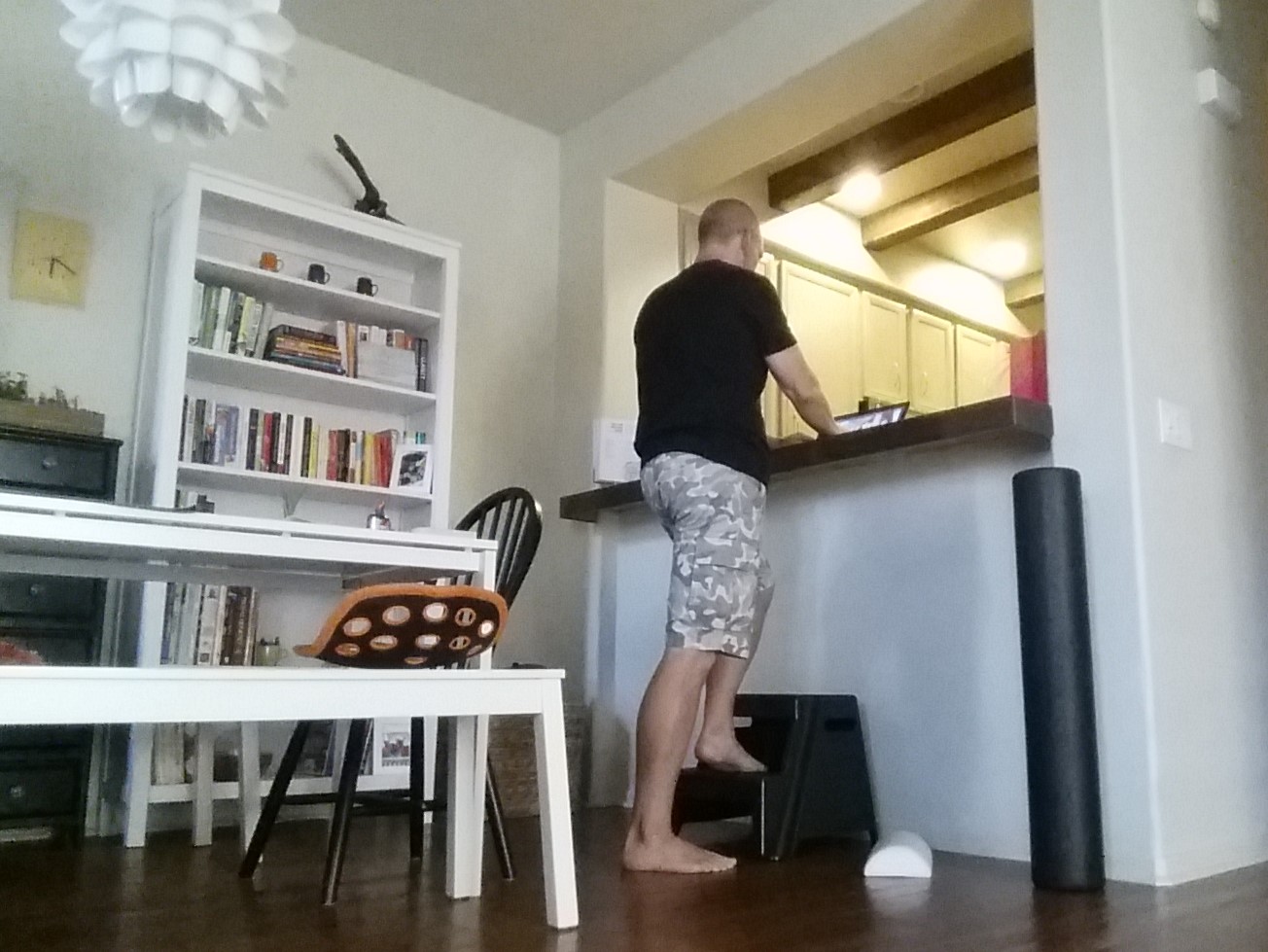In June 2020 this article from 2014 was lightly edited with updated resources, photos, and tips.
I've been working my a$$ off the last six weeks and I've been totally neglecting my own health practice to turn around two big projects by September—my next book Move Your DNA and a multi-media "Don't Just Sit There" project I'm doing with Mark Sisson on how to make your workspace better for your body.
Green screen!
The at-home workstation discussed.
(It looks like I'm not talking much, but REST ASSURED I yap plenty throughout the video portion of the guide.)
Like many of you, I use the computer for most of my work. I used to be all-sitting, and then I went to mostly standing, but, as many of you can attest to, standing ALL DAY isn't great for the body either.
As similarly experienced by the writer of the article Sitting Is Bad for You. So I Stopped. For a Whole Month, standing all day wreaks some havoc on my lower legs. In fact, lower leg injury—specifically to the veins in the lower leg—is one of the reasons many workers transitioned to chairs in the first place. As I've explained on this blog as well as in depth in both projects mentioned above, standing all day is not the solution to the sitting problem. The solution is creating a dynamic workstation. Actually, the solution is QUIT WORKING SO MUCH, but since that's going to take a more in-depth action plan, we'll go with "create a dynamic workstation" for now.
While you're waiting for more info to come out, I'll let you in on one of my coping-with-so-much-in-place-standing solutions: mobilizing the tissues of my lower leg.
Many of you are working on the Calf Stretch on the dome and the Soleus Stretch (Calf stretch w/knee bent). But when most dorsiflex (where the foot moves closer to the shin, decreasing the angle between the two), the thigh rotates inward, which means the motion at the ankle isn't really dorsiflexion at all, but super-loaded schmear.
What is schmear? Watch this video:
To increase the impact of your Calf and Soleus stretch, make sure you're not schmearing your ankle during those moves.
Check out this video I shot in class over the weekend. It's a little advanced (this was a class for our program graduates, not laypeople) but everyone should be able to glean something from it to improve the loads to the lower leg.
In short, if you're opting to be standing and working a lot, get your feet and ankles moving while doing so. Add some desk-texture and terrain (read more in Whole Body Barefoot and in the ebook version of Don't Just Sit There in our Office Worker's "Don't Just Sit There" Multimedia Course for more on why).
- put a dome at your feet for regular uphill ankle action
- check out contoured desk mats
- make a rock box to stand upon if you've got the freedom to kick off your professional shoes
- check out wobble boards to keep your legs active


